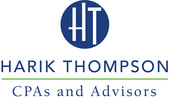|
Nonprofit accounting may seem overwhelming at times, but it becomes easier once you begin to understand how finances function and move within your organization. By using this info, you can implement best practices for effective accounting decisions. With the right accounting practices, you can be compliant and transparent, creating reports that let donors see how their money is being used. Your nonprofit needs to establish a system to track and record your good work.
To ensure proper tax reporting and guarantee that you get the most value from volunteers, updating these records should be part of regular bookkeeping and accounting operations. The tracking system should be standardized across the organization. What should you be tracking?
What reports should you be zeroing in on?
And what can your accountant do for your organization? Your accountant reviews bookkeeping entries, performs account and balance sheet reconciliations, prepares financial statements and reports, and reviews the financials with you prior to closing the monthly period so you can make the best financial decisions in managing your nonprofit. The right accounting experts ensure your knowledge of and compliance with nonprofit tax and accounting regulations is up to par, preventing costly mistakes. The tax code for nonprofits can be confusing, but accountants can help you maintain your tax-exempt status. Comments are closed.
|
Newsletter articles are posted every 2 weeks. If you would like to have our e-newsletter delivered directly to your inbox, please sign up. Your information is confidential; you can unsubscribe at any time. Subscribe. Categories
All
|
Proudly powered by Weebly

 RSS Feed
RSS Feed